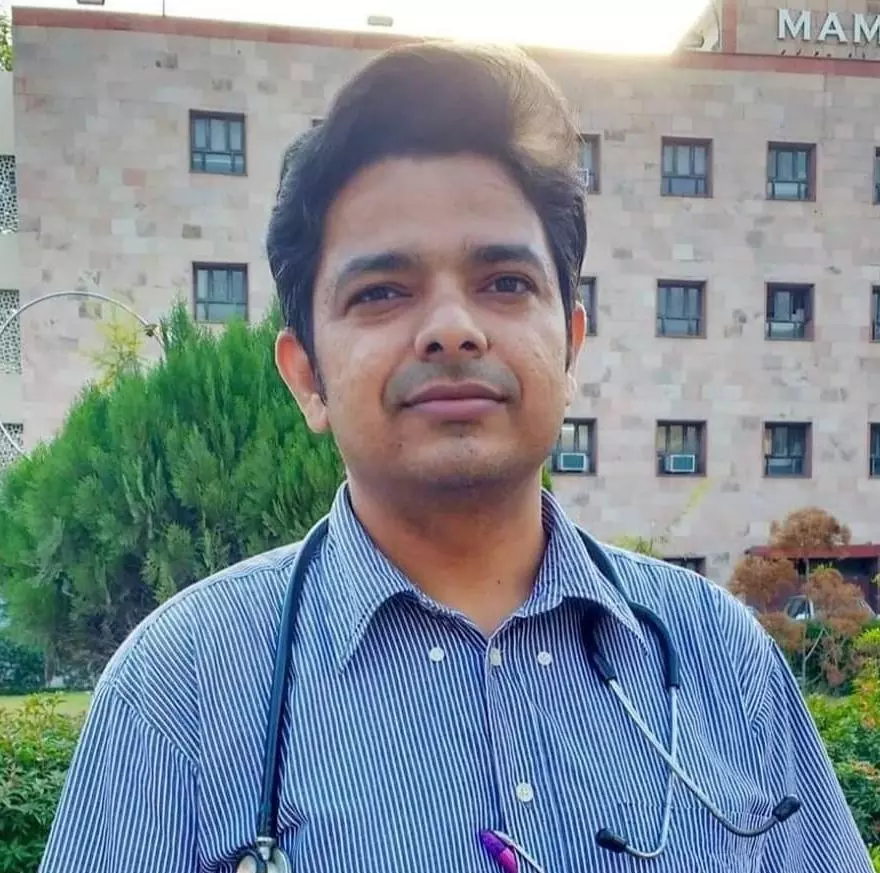- Home
- Medical news & Guidelines
- Anesthesiology
- Cardiology and CTVS
- Critical Care
- Dentistry
- Dermatology
- Diabetes and Endocrinology
- ENT
- Gastroenterology
- Medicine
- Nephrology
- Neurology
- Obstretics-Gynaecology
- Oncology
- Ophthalmology
- Orthopaedics
- Pediatrics-Neonatology
- Psychiatry
- Pulmonology
- Radiology
- Surgery
- Urology
- Laboratory Medicine
- Diet
- Nursing
- Paramedical
- Physiotherapy
- Health news
- Fact Check
- Bone Health Fact Check
- Brain Health Fact Check
- Cancer Related Fact Check
- Child Care Fact Check
- Dental and oral health fact check
- Diabetes and metabolic health fact check
- Diet and Nutrition Fact Check
- Eye and ENT Care Fact Check
- Fitness fact check
- Gut health fact check
- Heart health fact check
- Kidney health fact check
- Medical education fact check
- Men's health fact check
- Respiratory fact check
- Skin and hair care fact check
- Vaccine and Immunization fact check
- Women's health fact check
- AYUSH
- State News
- Andaman and Nicobar Islands
- Andhra Pradesh
- Arunachal Pradesh
- Assam
- Bihar
- Chandigarh
- Chattisgarh
- Dadra and Nagar Haveli
- Daman and Diu
- Delhi
- Goa
- Gujarat
- Haryana
- Himachal Pradesh
- Jammu & Kashmir
- Jharkhand
- Karnataka
- Kerala
- Ladakh
- Lakshadweep
- Madhya Pradesh
- Maharashtra
- Manipur
- Meghalaya
- Mizoram
- Nagaland
- Odisha
- Puducherry
- Punjab
- Rajasthan
- Sikkim
- Tamil Nadu
- Telangana
- Tripura
- Uttar Pradesh
- Uttrakhand
- West Bengal
- Medical Education
- Industry
A new breast cancer marker that may help in personalized therapy - Video
Overview
'crown-like structures' surrounding breast tumours in overweight and obese patients were discovered in new study in University of Southampton and it was found that these crown like structures could hinder their response to therapy.
The findings of this study could potentially be used to improve personalised treatment for patients with human epidermal growth factor receptor 2 (HER2) positive overexpressed breast cancer.
Adipose tissue, or body fat, is an important component of the healthy human breast and yet high body mass index (BMI) is associated with increased risk of developing breast cancer. Overweight patients also have worse survival rates than patients with healthy body weight.
In patients with a high BMI, increased body fat surrounding the breast can cause inflammatory immune cells, called macrophages, to gather in the breast's fat tissue. These macrophages can then form what are called 'crown-like structures' by surrounding these fat cells.This creates an inflammatory environment in the breast which can lead to the onset and growth of tumours. How these crown-like structures go on to affect breast cancer progression and respond to therapy is largely unknown.
The research team, led by Professors Stephen Beers, Ramsey Cutress and Dr Charles Birts, assessed samples from a group of HER2+ breast cancer patients to investigate the link between high BMI and the formation of crown-like structures, and the subsequent effect of these on how patients responded to therapy with a drug called trastuzumab. The results, published in the journal Scientific Reports, showed that patients that were overweight or obese had significantly more crown-like structures in their fat tissue surrounding the tumour, and that this was associated with a faster time to metastatic disease, an indication of how well the patients have responded to therapy.
They then went on to identify a potential molecular biomarker, called CD32B, on the surface of the macrophages in these crown-like structures. When this marker was present in overweight and obese patients, their response to trastuzumab therapy was poorer. Stephen Beers,Professor of Immunology and Immunotherapy at the University of Southampton said, "These findings will be of interest to clinicians and researchers involved in breast cancer treatment as they could potentially be used to develop personalised treatment in patients with HER2 positive overexpressed breast cancer.
"For example, doctors would know that patients with a high BMI and the marker on their crown-like structures are likely to have a poor response to trastuzumab therapy. They may therefore benefit from more intensive anti-HER2 therapy earlier in their treatment. The research team are now looking at ways to change the behaviour of these crown-like structures to improve responses to breast cancer therapy.
Speakers
Dr B.P. RAHUL
MBBS (Bachelor of Medicine and Bachelor of Surgery)



